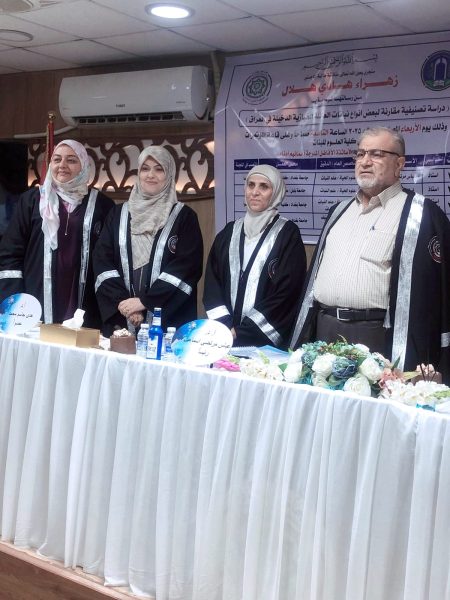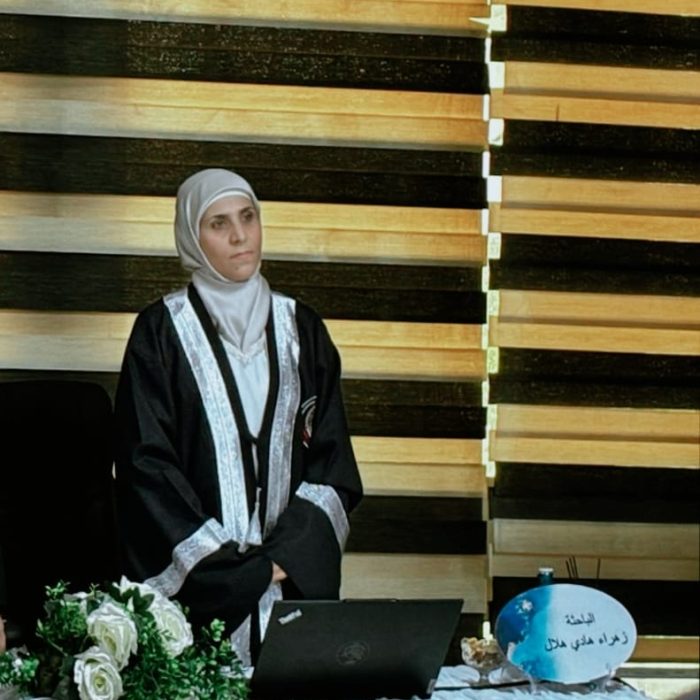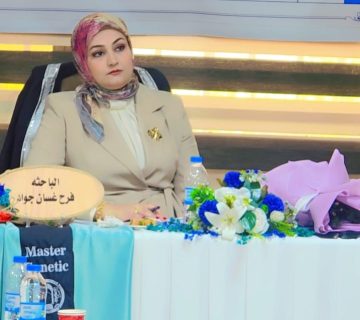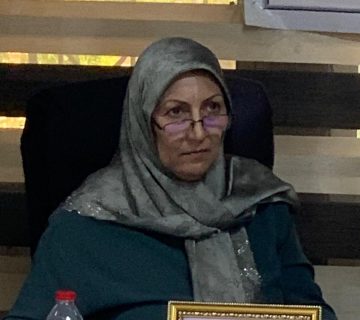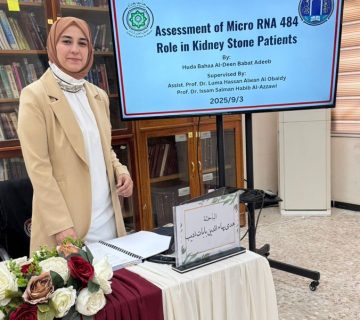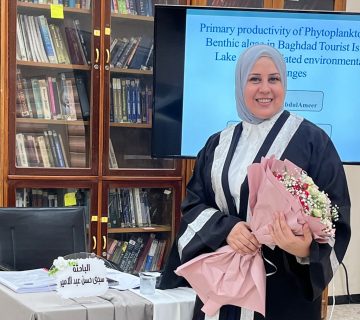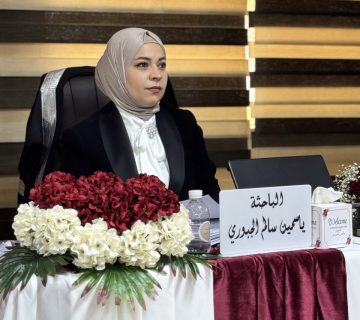Master Discussion
The College of Science for Women- University of Baghdad discussed a master’s thesis entitled (A Comparative Taxonomic Study for Some Exotic Species of Malvaceae in Iraq). The thesis was submitted by the student Zahraa Hadi Hilal in Biology/Botany under the supervision of Assistant Professor Dr. Zainab Abid Aun.
The thesis focused on the continuous influx of plants into Iraq, which has attracted the attention of researchers interested in the environment and botany, since these plants are new plants to the Iraqi ecosystem, and their impact on surrounding soil plants is not yet known. Taxonomy seeks to find new taxonomic evidence, such as chemical and molecular markers, in addition to morphological characteristics, which are considered the most important for determining the genetic relationships between these plants and the species already growing in Iraq.
The study included a study of the taxonomic characteristics, which encompassed an examination of the morphological, chemical, and molecular traits of the species Bombax and Dombeya, and their comparison with other species belonging to the same family, especially Malva L., which represents the Malvaceae family. The main purpose of the study is to clarify the importance of plant classification at the levels of external morphology and internal structure of plant parts, as well as the type, quantity, and concentration of active secondary metabolites using HPLC techniques. The study also involved comparing the amounts of these chemical compounds among the plants, and classifying them based on molecular diagnosis through gene amplification using PCR and sequence analysis to determine the genetic closeness of the genera. This was aimed at assessing their diagnostic value, defining taxonomic ranks, identifying the degree of similarity, and adding them as evidence to help determine rank identity and the phylogenetic tree of the plants for comparison among these genera.
The study recommended researching plants belonging to the Malvaceae family, especially those introduced into the Iraqi environment, and studying all taxonomic levels of their genera and species. Molecular characteristics should be investigated, and a phylogenetic tree should be constructed for Malvaceae plants along with other species of the family. Taxonomic studies should also be expanded to include recently cultivated plants, with an attempt to determine their chemical content and biological activities, which may have either positive or negative effects on the surrounding environment (soil, water, or nearby organisms). It is also recommended to study the morphological traits of pollen grains across all taxa using a scanning electron microscope (SEM) and to compare them with other plants of the same family, in addition to conducting comparative anatomical studies of some plant parts to identify possible variations among species. It should be noted that the plant Dombeya has flowered inside greenhouses, suggesting that it may be possible to cultivate it in warm and humid areas, either under tall trees that provide shade or under artificial canopies, with continuous irrigation and monitoring.
Excellent.
